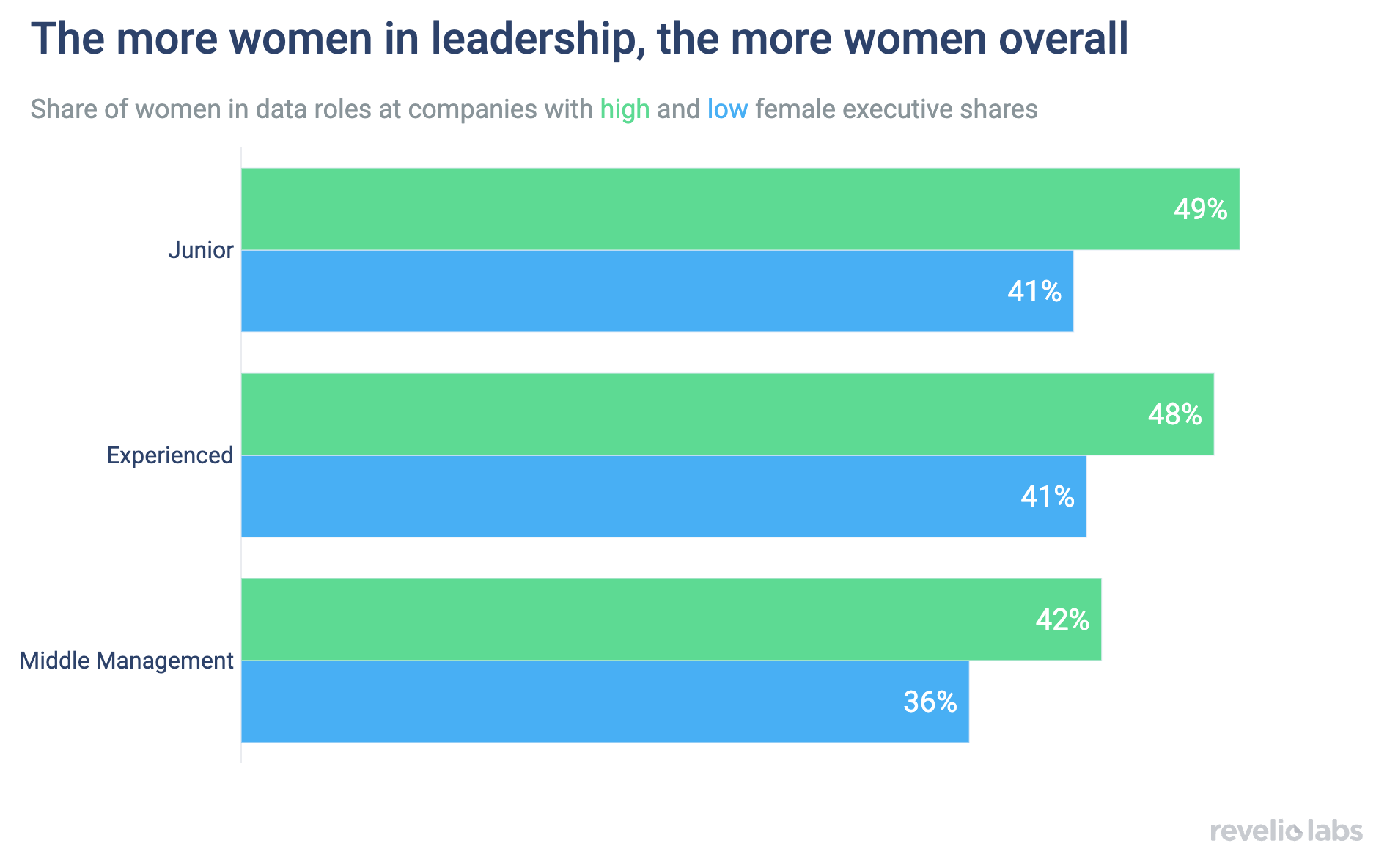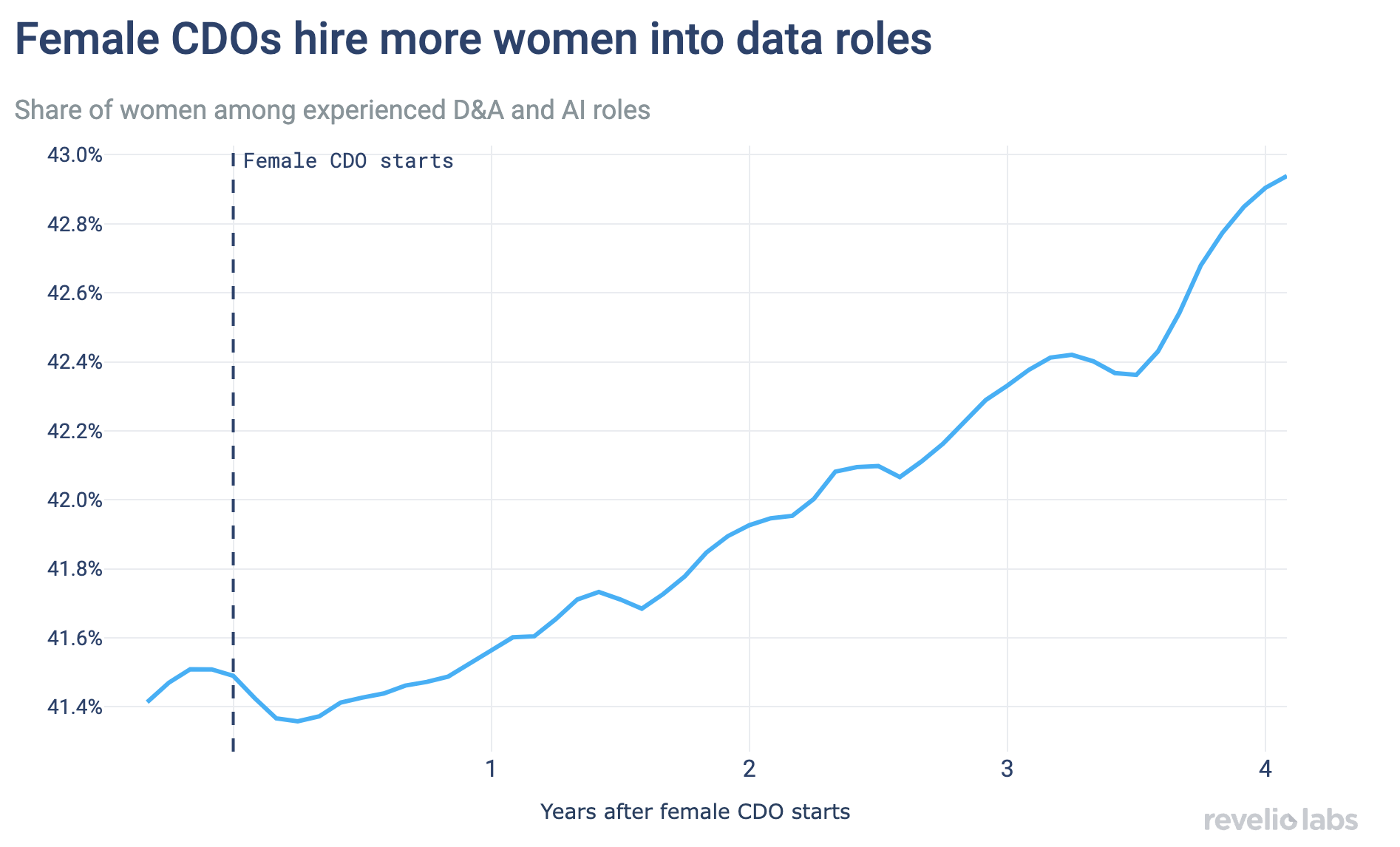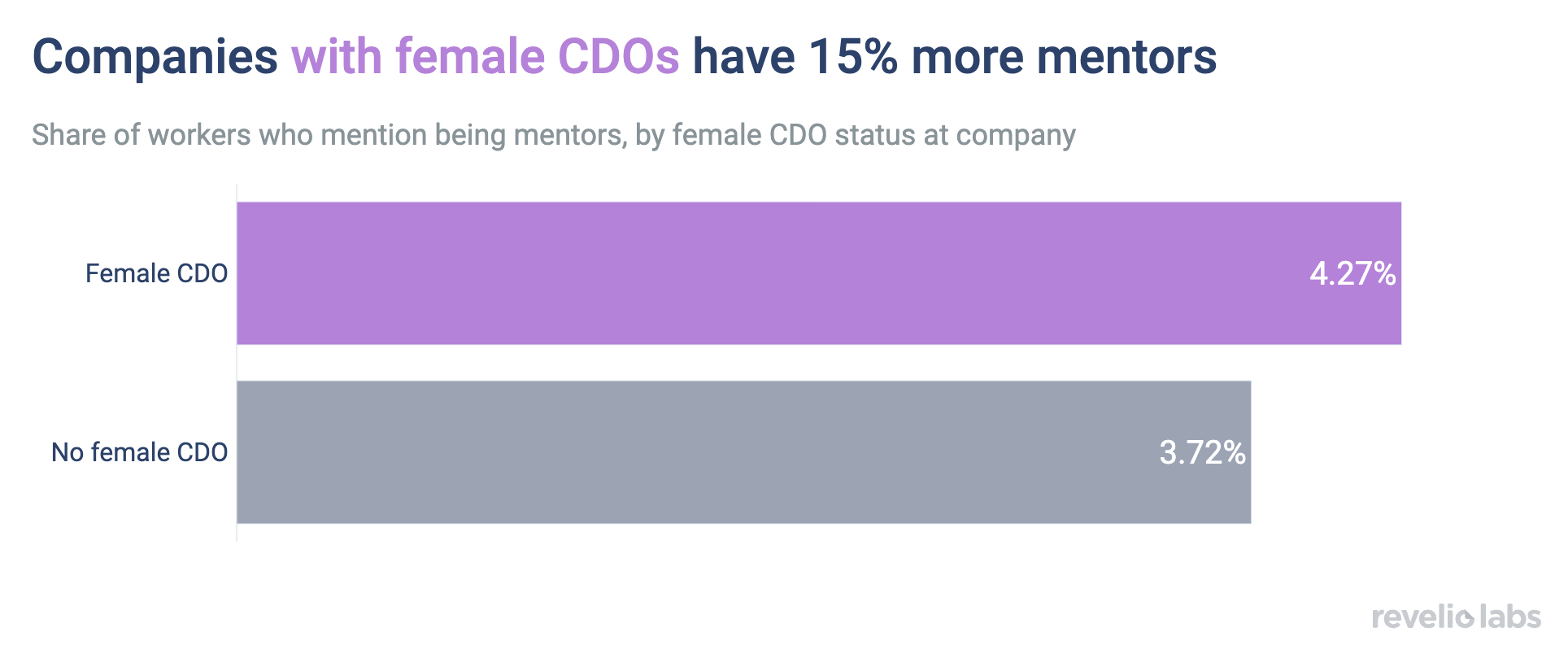The Ripple Effect of Female Leadership in Data
Revelio Labs x KPMG x WLDA: Outlook for women in data is brighter under female CDOs

Companies with more women in senior executive data roles have higher female representation in data roles across the organization. The difference is greatest for junior roles.
Hiring a female CDO improves the trajectory of female hiring into experienced data roles. Four years after a female CDO was appointed, the share of women D&A AI roles at the experienced level is three percentage points higher.
Companies with female CDOs have 15% higher shares of employees who mention being a mentor to younger colleagues.
We recently published our collaboration with KPMG & WLDA on the Career Outlook for Women in Data, Analytics and AI roles. The study paints a grim picture of the state of female representation in data. It also points to potential solutions. One solution lies in improving female representation at senior levels–as a means of paving the way for more women to enter and stay in data roles across the organization. Women in senior leadership roles are not only more likely to hire and retain female talent but can also act as role models and mentors for more junior colleagues.
To expand on the findings of the collaboration, we dive into our Revelio Labs workforce data to understand whether higher female representation in senior leadership roles in data can indeed make a difference. Looking at US companies with employees in data roles across the corporate ladder, we see that companies with more women at the senior executive level in data roles have more women in data roles across the whole organization. More specifically, companies that are above the median share of women in senior leadership positions have better female representation in their data workforce, particularly at the junior and entry-level. On average, in companies with a high share of senior female data leaders, 49% of junior data roles are held by women, 8 percentage points more than in companies with lower senior female representation. This suggests that women in executive positions make a difference to the talent pipeline starting at the bottom.


Sign up for our newsletter
Our weekly data driven newsletter provides in-depth analysis of workforce trends and news, delivered straight to your inbox!
One potential explanation for this difference is that companies with more women in executive roles may be fundamentally different from those with less senior female representation. For instance, they may just be hiring more women overall because of their industry or culture. Indeed, women make up only 29% of senior leadership in below-the-median companies, while the share of female leaders is on average 46% in the above-the-median group.
To get a more causal interpretation of whether improving senior female representation actually improves female representation overall, we use our data to see how female representation changes after companies appoint a female Chief Data Officer. We find that hiring a female Chief Data Officer improves the share of women in data overall, especially at the mid-career or experienced level. The effect also takes some time to realize: The share of women in experienced data roles starts pointing upward a few months after appointment, and increases on average by 3 percentage points over a 4 year span. These small but steady improvements are consistent with the gradual nature of organizational change, and we find them important and encouraging.


What might drive these positive results from female senior leadership in data? First, there may be a ripple or cascade effect down the organization: Senior leaders hire or retain more women for mid-level roles, who in turn hire more female juniors. Secondly, female leaders may be able to impact the organization’s culture, making it more inclusive and a breeding ground for the growth and success of their female colleagues. For instance, it has been well established that mentorship and role models are an important component when it comes to bringing underrepresented groups into a new environment. Female leaders may provide their younger counterparts with role models that they can emulate and look up to, and offer crucial mentoring opportunities.
To explore this further, we look at whether companies with female CDOs have a stronger mentorship culture. In our workforce data, we can see whether employees in data roles mention being a mentor in their role descriptions: We can thus capture mentorship by looking at the share of employees who include mentoring as part of their role. Indeed, companies with female CDOs have 15% more employees describing themselves as mentors relative to companies without female CDOs.


In our collaboration, we show that female representation in D&A and AI roles is experiencing a worrying trajectory, as the share of women in data roles has actually been decreasing overtime. Additionally, representation in broader STEM roles has been lagging behind, and has not seen significant improvements in the last decade. As with representation of any underrepresented group, female representation in D&A and AI roles will not improve if left alone and requires a proactive approach from invested organizations. Improving gender equity at the top of the corporate ladder provides one clear path for improvement. Granted, this may be the hardest lever to change. However, as our research shows, hiring the right person at the top can create large impacts downstream, creating an environment where all can thrive.


